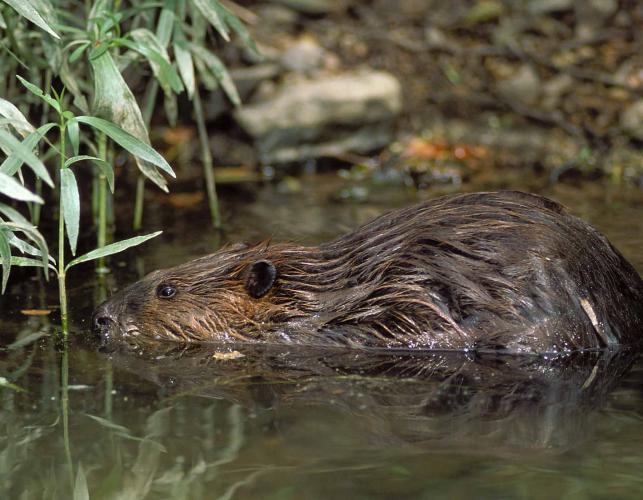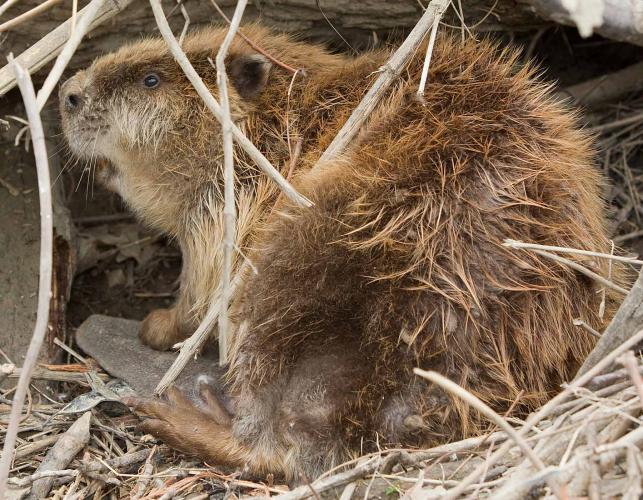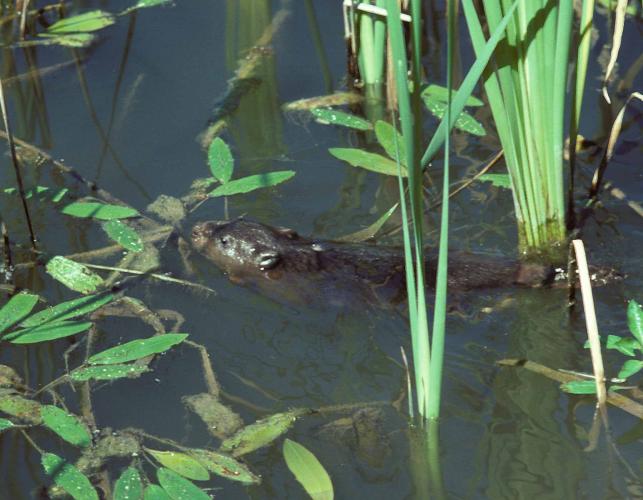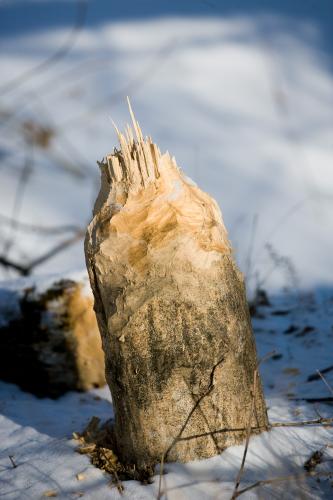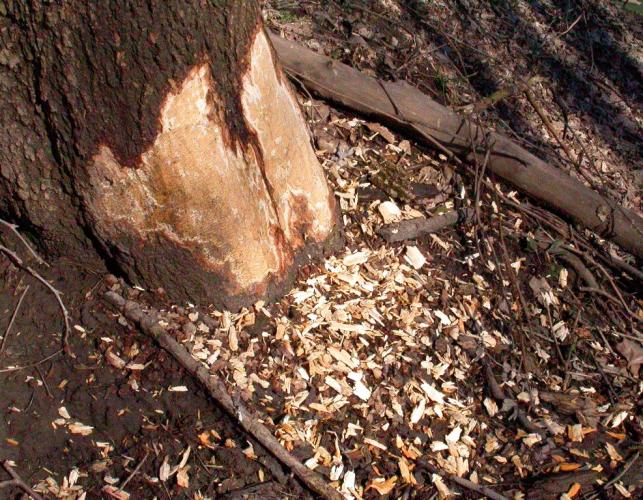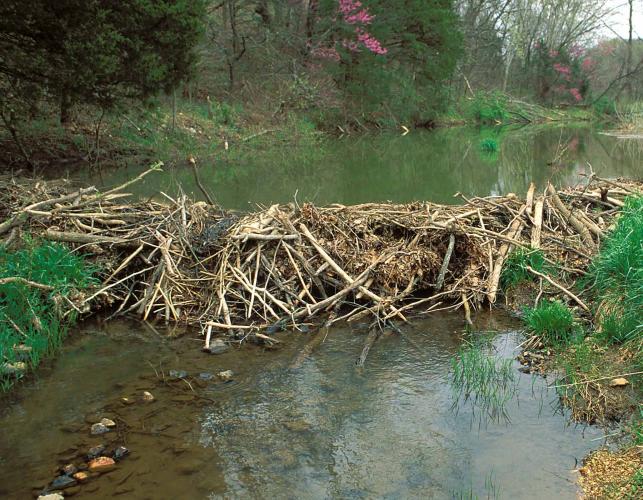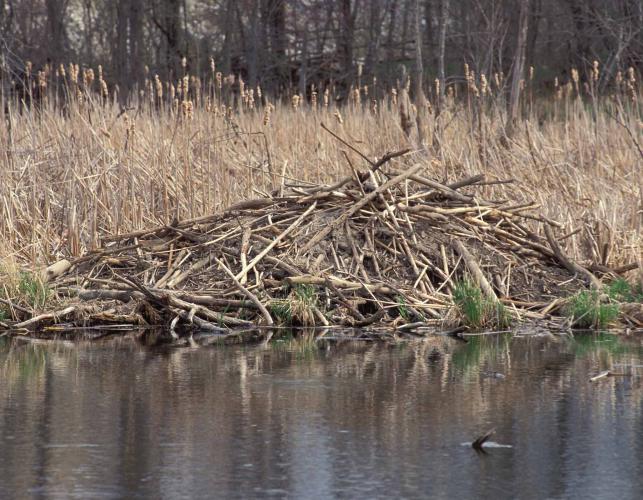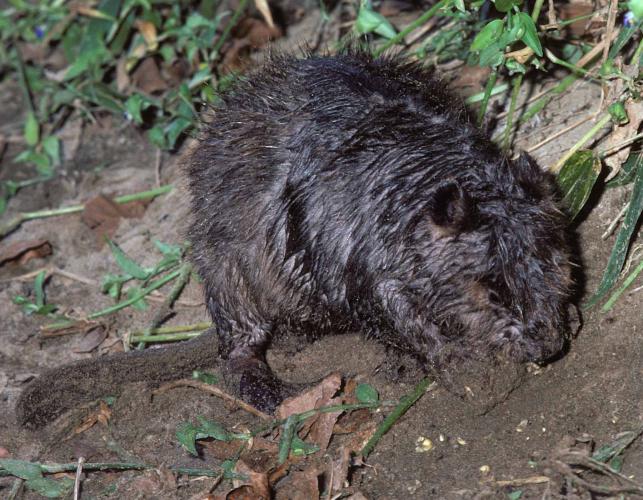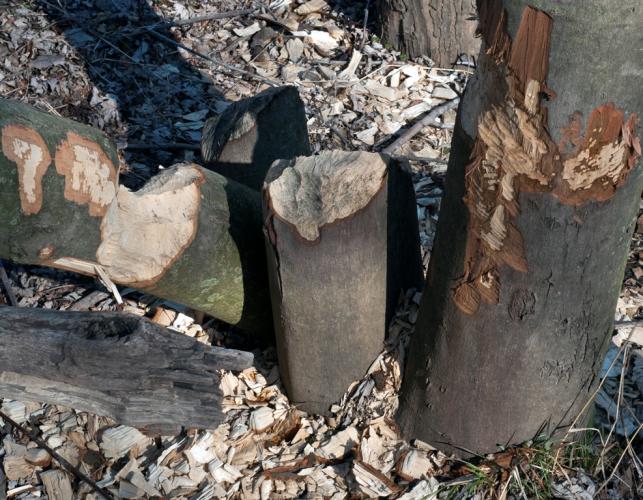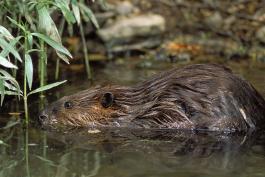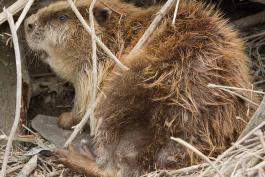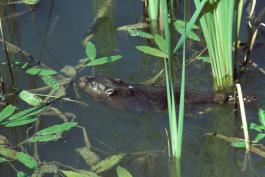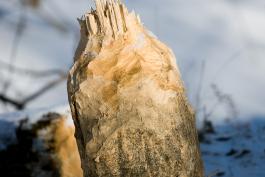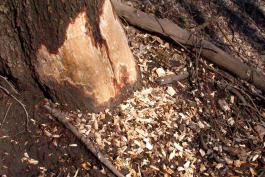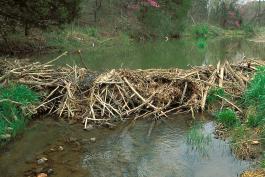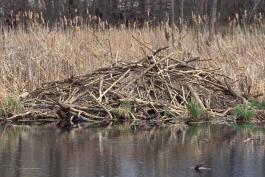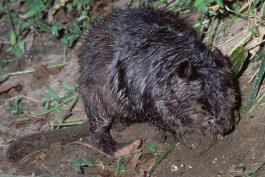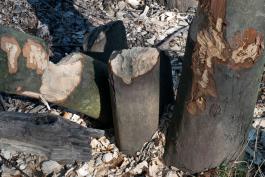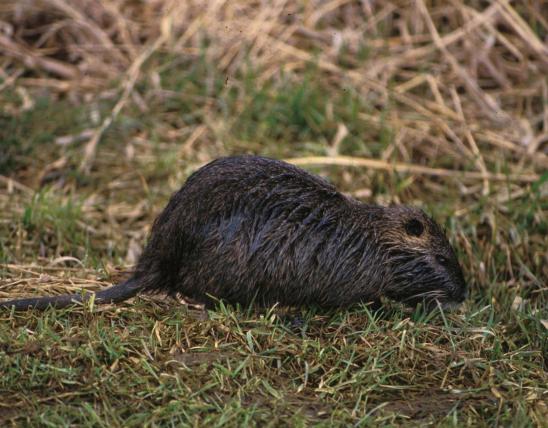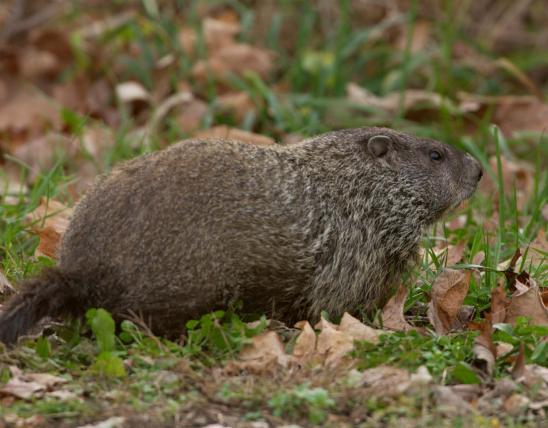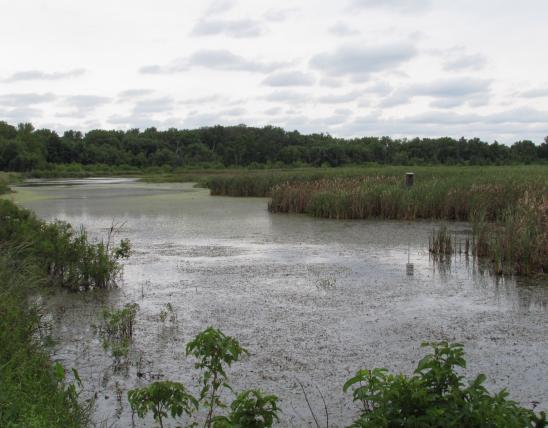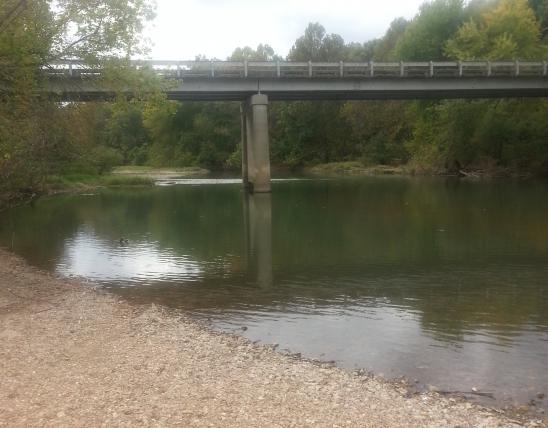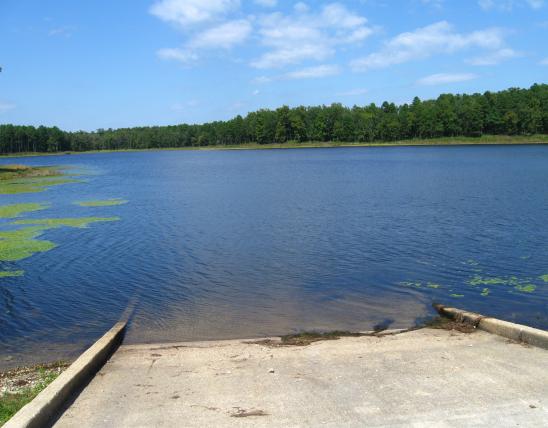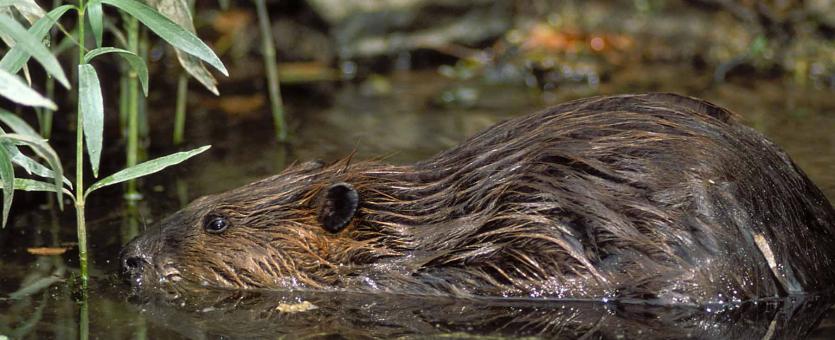
The American beaver is a large rodent associated with waterways and wetlands. It has webbed hind feet; a large, relatively hairless, horizontally flattened tail; a blunt head with small eyes and ears; a short neck; and a stout body. The color is a uniform dark brown above with lighter underparts and a blackish tail.
Similar species: Two other aquatic rodents in Missouri might be confused with beavers and with each other:
- The common muskrat, found statewide, has a long, narrow, vertically flattened tail that is slightly shorter than the combined length of head and body. The tail moves rapidly in a snakelike pattern while swimming. Also, the muskrat is a smaller animal, usually only weighing 2–4 pounds.
- The introduced nutria, which sometimes occurs in southeastern Missouri, has a tail that is round in cross-section, and the tail trails smoothly behind them when swimming. Also, at 15–25 pounds, it is intermediate in size between beaver and muskrat.
Total length: 34–54 inches; tail length: 9–17 inches; weight: 26–90 pounds.
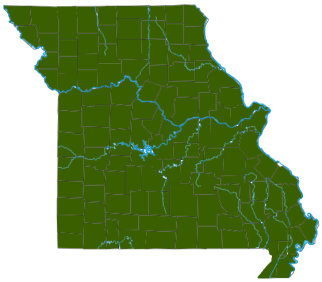
Beavers occur statewide near streams and wetlands.
Habitat and Conservation
In Missouri, beavers live in and along streams, rivers, marshes, and small lakes. Though they are famous for dam building, in Missouri they are less likely to construct dams than they are in regions farther west and north. Instead, in our faster and fluctuating streams, they usually excavate a den in a high bank. In both lodges and bankside dens, the entrance is usually below water.
One sign of their presence in an area are their distinctively gnawed and felled trees and branches.
Beaver restoration efforts have brought their numbers to sustainable levels. Trappers may pursue this furbearer species during its prescribed trapping season.
Food
In spring and fall, beavers eat woody and nonwoody vegetation. In summer, they eat mostly nonwoody plants; in winter, they eat mostly woody plants. Woody foods include the bark, new twigs, and new bark growth of a variety of trees and woody vines ranging from willows and cottonwood to oaks, hickories, sycamores, and wild grapevines. Nonwoody foods include corn, pond lilies, watercress, and many other herbaceous plants.
Status
Despite an extreme reduction in their colonies by about 1900, Missouri’s beaver population has been reestablished statewide.
Life Cycle
Beavers are usually nocturnal but may also come out in the daytime, especially in fall when they are busy gathering food and preparing their dams and lodges for winter. They live in colonies — family groups comprising an adult male and female and their yearlings and kits. Breeding begins in January and February, and a single litter of usually 3 or 4 young is born in April, May, or June. The young are weaned after about 6 weeks but remain with the family for about 2 years.
Control
Human Connections
Beavers are harvested for their fur, which is used in coats and trimmings. Some people enjoy eating beaver meat. In the past, beaver fur, meat, and oil were immensely important in attracting both Native Americans and European settlers to our region.
The wetlands created by beavers (see Ecosystem Connections) benefit humans by improving water quality, retaining sediments, reducing flood impacts, and providing a variety of opportunities for wildlife. However, human-wildlife conflict can occur when beaver dams threaten human habitation or agricultural land.
Ecosystem Connections
Beavers are considered “ecosystem engineers” due to their ability to create habitat that other species are dependent on. By constructing dams, beavers create and maintain wetlands, providing habitat for countless plants, animals, birds, and insects.
Signs and Tracks
Front track:
- 3½ inches long
- 5 toes, though often only 3 or 4 toes leave a track.
Hind track:
- 6–7 inches long, 5 inches wide
- 5 toes, though often only 3 or 4 toes leave a track
- toes are webbed, though the marks are not always distinct
- hind track is often confused with goose tracks.
Other notes:
- Beaver are common on banks of rivers and other aquatic habitats where trees are nearby.
- On steep banks, look for scratch marks.
- Hind tracks are positioned just in front of the front tracks, but often they land directly on top of the front tracks so that the front tracks are indistinguishable.
- The flat tail often drags down the middle, sometimes obliterating foot tracks.
- The claws leave marks.
- Toe pad prints and heel pad prints are not separated (the entire finger leaves print).
- Look for other beaver sign, especially their distinctively gnawed and felled trees and branches.
- Trees are usually cut in autumn. In the summer, beaver eat more green foods, such as giant ragweed.
- Beaver generally forge a trail and then stick to it. Thus their tracks often overlap a great deal. Over time, the trail can turn into a little trench.
- Scats are not commonly seen, because beaver usually poop in the water. Scats are sometimes seen in ice in winter.
